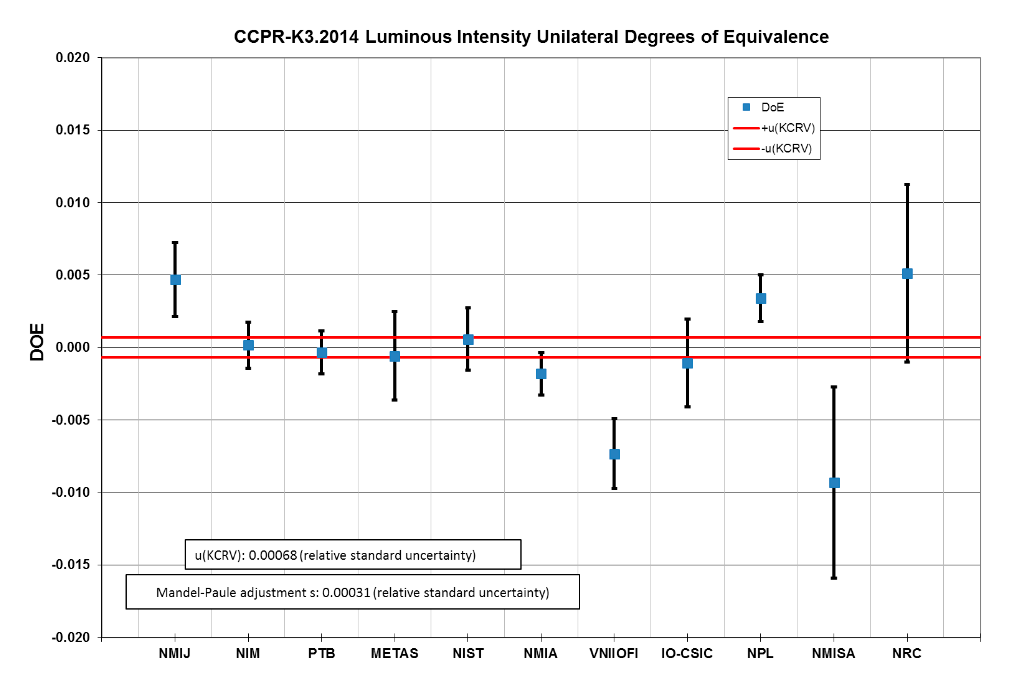Final report on the CCPR Key Comparison CCPR-K3.2014 Luminous Intensity

Do you know how agreement between measurement standards from different countries is guaranteed?
Key international comparison of Luminous Intensity between 12 countries in which the IO-CSIC acts as the Spanish reference laboratory.
The equivalence of national measurement standards in the field of photometry and radiometry is based on a set of key comparisons chosen and organized by the Consultative Committee for Photometry and Radiometry (CCPR) of the International Committee for Weights and Measures (CIPM), working in close collaboration with Regional Metrology Organisations, such as EURAMET.
In September 2009, the Photometry and Radiometry Advisory Committee decided to start a second round of the key light intensity comparison (the first round was in 1999). The National Research Council of Canada (NRC) was chosen to organize this comparison in which a total of 12 laboratories from around the world were selected, including the Institute of Optics as the national reference laboratory in photometry. The measurements in the laboratories were carried out between 2014 and 2020.
Due to the fragility of the incandescent lamps that were used for the measurements, it was decided that a star-shaped comparison would be used, each participating laboratory would contribute a lamp that would be measured by it, by the organizing laboratory and finally it would be measured again in the participating laboratory.

The organizing laboratory measured all the lamps under the same conditions to minimize the error.
The experiment began with 70 lamps, of which 11 were discarded because they broke on the way from one country to another or because manufacturing defects were found in them, leaving one country out of the comparison.

What is the candle?
The candela is the basic unit of measurement of luminous intensity in the SI International System. It is the luminous intensity in a given direction of a source that emits monochromatic radiation of frequency 540 x 1012 Hz with a radiant intensity in that direction of 1/683 W/sr.
Related News
General V(λ) mismatch index: History, current state and new ideas
Madrid / July 5, 2023A European research team has presented a comprehensive review of the general V(λ) mismatch index and proposes new concepts for...
Online seminar by Joaquín Campos on Friday the 23rd entitled “New patterns and calibration methods to replace incandescent lamps”
Madrid / June 21, 2023Our colleague Joaquín Campos is going to offer an online conference entitled "New calibration standards to replace...
Seminar by Joaquín Campos entitled “Passive or super-cold radiant cooling materials”
Madrid / May 4, 2023Our colleague Joaquín Campos is going to offer a seminar "Passive or super-cold radiant cooling materials" within the conference...





